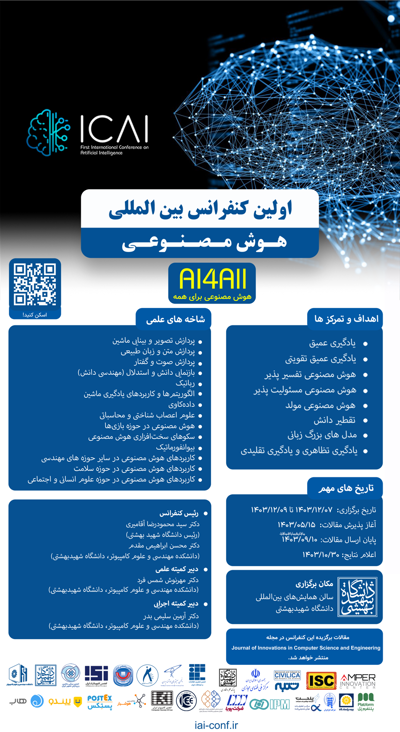0% Complete

نویسندگان :
کلمات کلیدی :
چکیده :
لیست مقالات بایگانی شده
Seyed Mohammad Javad Toghraee - Hadi Nilforoushan - Nafiseh Sanaee
Faezeh Sarlakifar - Mohammadreza Mohammadzadeh Asl - Sajjad Rezvani Khaledi - Armin Salimi-Badr
Safoura Ashoori - Khadigh Nemati - Mohamad hadi Amini
Iman Arastoo - Kimia Karimi
Melika Arabzadeh - Kimia Maleki - Bijan Bambai - Hossein Azad
Ali Azimi Lamir - Masoud Bekravi - Babak Nouri Moghaddam
Rana Poureskandar - Abbas Mirzaei - Babak Nouri-Moghaddam
Mohammad Shojaeinia - Hamid Moghaddasi
Sahar Farazi - Yasser Shekofteh
Mohammad Mahdi HajiRamezanAli - Hasan Deldar - Mohammad Mehdi Homayounpour

